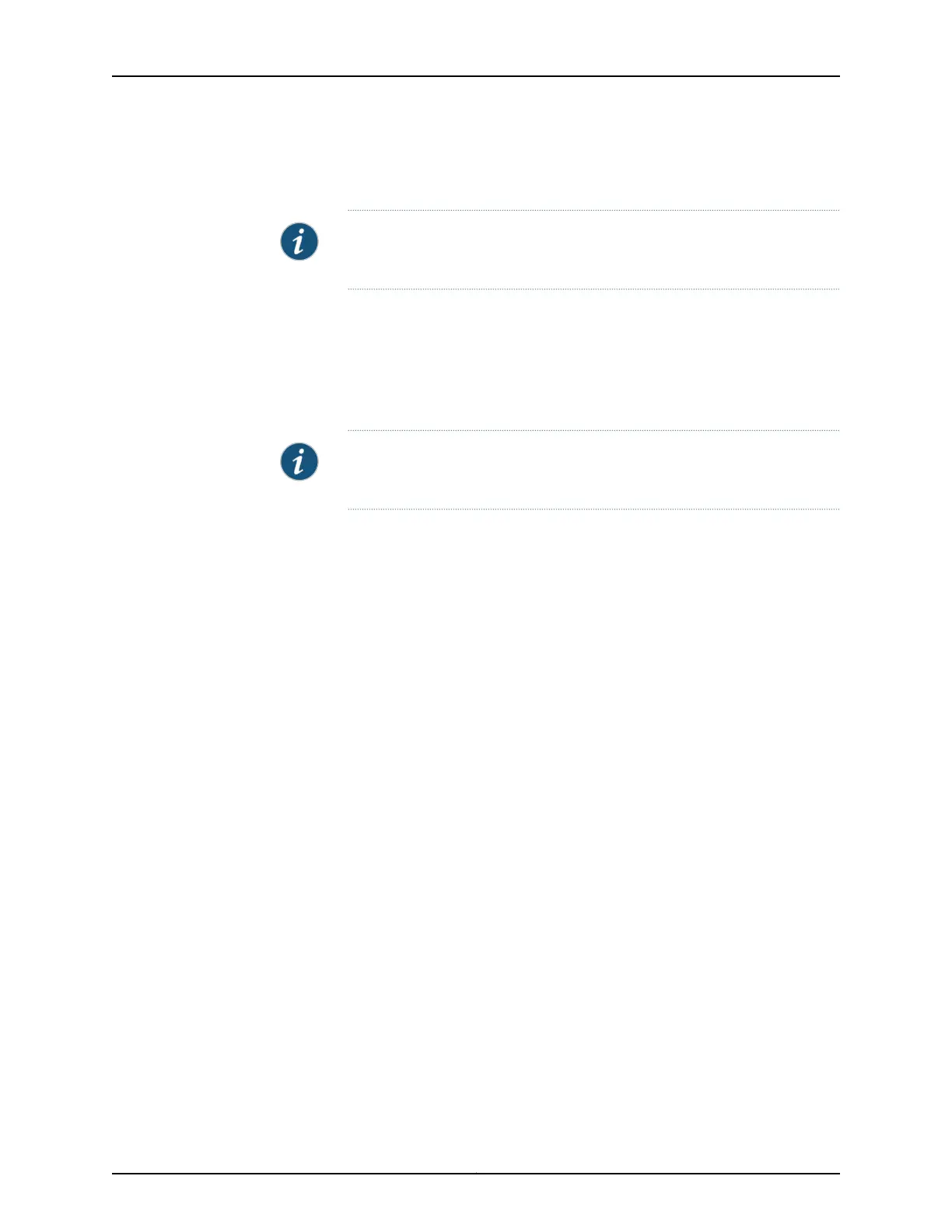configured on the egress physical interface are applied on the basis of the forwarding
class and packet loss priority derived during ingress.
NOTE: CoS for NAT services is not applicable on ACX5048 and ACX5096
routers.
Queuing and scheduling are supported on the inline services interface to handle congestion
at the inline services interface. Congestion at inline services interface is possible when
the interface is oversubscribed. In this case, you would need to selectively drop packets
based on the packet's forwarding class and packet loss priority. To drop packets based
on the packet's forwarding class and packet loss priority, scheduler map configurations
are supported on the inline services interface.
NOTE: In ACX Series routers, you cannot configure classification and rewrite
policies on the inline services interface.
Related
Documentation
Network Address Translation Overview on page 999•
• Network Address Port Translation Overview on page 1001
• Enabling Inline Services Interface on ACX Series on page 1008
• Understanding Service Sets on page 1028
• Service Filters in ACX Series on page 1035
• Guidelines for Applying Service Filters on page 1036
• Service Filter Match Conditions for IPv4 Traffic on page 1038
• Service Filter Match Conditions for IPv4 Traffic on page 1038
• Network Address Translation Address Overload in ACX Series on page 1001
• Configuring Address Pools for Network Address Port Translation (NAPT) Overview on
page 1007
• Network Address Translation Rules Overview on page 1004
• Configuring Service Sets for Network Address Translation on page 1030
• Configuring Service Sets to Be Applied to Services Interfaces on page 1031
• Configuring Queuing and Scheduling on Inline Services Interface on page 1040
Copyright © 2017, Juniper Networks, Inc.888
ACX Series Universal Access Router Configuration Guide

